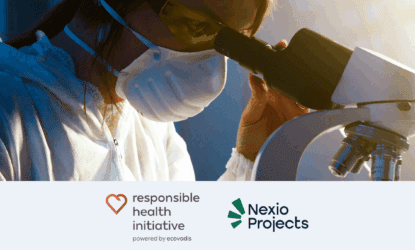 Leveraging your EcoVadis rating for market advantage
Leveraging your EcoVadis rating for market advantage
“By using the GHG Protocol’s calculation tools and emissions accounting standards, businesses can ensure that their measurements are consistent with global best practices.”
Want to learn more about the origins of the GHG Protocol, its methodologies and the benefits of conducting a GHG inventory? Read on for our expert insights.
What is the GHG Protocol?
The GHG Protocol is a non-governmental organisation that sets globally recognised standards for the measurement and management of greenhouse gas (GHG) emissions. It provides a comprehensive framework for businesses, governments and organisations to assess and monitor their carbon footprint. Its standards are therefore essential for organisations seeking to reduce their emissions and meet regulatory targets.
By standardising the way emissions are measured and reported, the GHG Protocol ensures that businesses of all sizes can consistently quantify their environmental impact, regardless of their location or industry. With sustainability now high on many corporate, government and consumer agendas, the GHG Protocol has become the cornerstone for several compliance and voluntary reporting frameworks, a few can be named below:
- Corporate Sustainability Reporting Directive (CSRD): Adopted by the European Union in 2023, the CSRD requires companies operating in Europe to disclose their emissions beginning in 2025. The European Sustainability Reporting Standards (ESRS) directly reference GHG Protocol’s standards
- U.S. Securities and Exchange Commission (SEC) Climate Disclosure Rule: Finalized in March 2024, this rule requires companies to disclose some of their emissions if deemed financially material to investors
- International Sustainability Standards Board (ISSB) IFRS S2: While voluntary at the global level, this standard has been made mandatory in some countries. Companies in these countries are required to disclose their scope 1, 2, and 3 emissions.
- Federal Supplier Rule (proposed): This rule would require federal contractors receiving more than $50 million in annual contracts to disclose annual scope 1, scope 2, and relevant categories of scope 3 GHG emissions. Contractors receiving $7.5M – $50M would be required to report scope 1 and 2 emissions
- Streamlined Energy and Carbon Reporting (SECR): This UK framework requires quoted companies to report global Scope 1 and 2 emissions, while large unquoted companies and LLPs must report UK energy use and associated emissions
The origins of the GHG Protocol
The development of the GHG Protocol can be traced back to the late 1990s, when businesses and governments were beginning to grapple with the impacts of climate change but lacked the tools to accurately assess their contribution to GHG emissions. They needed a framework to help them measure their direct and indirect emissions in a way that was transparent and credible.
In response, the World Resources Institute (WRI) and the World Business Council for Sustainable Development (WBCSD) created an international standard for GHG accounting: the GHG Protocol. The GHG Protocol has continued to evolve ever since. It now includes several sector-specific standards and tools to help businesses and governments manage not only their direct emissions but also those generated throughout their supply chain – in other words, their Scope 1, 2 and 3 emissions.
Read our latest articles for more information on Scope 1 and 2 and Scope 3 emissions.
What types of emissions are covered by the GHG Protocol?
One of the most important contributions of the GHG Protocol is its classification of emissions into three distinct ‘Scopes’, providing a comprehensive view of a company’s carbon footprint. These Scopes, listed below, have become central to other reporting standards, such as the Corporate Sustainability Reporting Directive (CSRD) and ISSB IFRS S2 (when adopted under national regulatory frameworks as jurisdictional authorities such as Brazil and Sri Lanka)..
- Scope 1 (direct emissions): these are emissions from sources owned or controlled by the company, such as fuel combustion in company vehicles or industrial processes.
- Scope 2 (indirect emissions from energy): these are emissions from the generation of purchased electricity, steam, heating and cooling used by the company.
- Scope 3 (other indirect emissions): these are emissions generated in the company’s value chain, both upstream and downstream. This includes everything from raw material sourcing, employee commuting and business travel to emissions from the use and disposal of the company’s products. For CSRD related purposes (under ESRS E1) reporting scope 3 is mandatory on a conditional basis; such as companies with more than 750 employees and requires disclosure of material categories on a yearly basis with full update every three years.
In total, the GHG Protocol covers seven types of greenhouse gases:
- Carbon dioxide (CO2),
- Methane (CH4),
- Nitrous oxide (N2O),
- Hydrofluorocarbons (HFCs),
- Perfluorocarbons (PFCs),
- Sulphur hexafluoride (SF6),
- Nitrogen trifluoride (NF3).
By categorising emissions into these Scopes, the GHG Protocol helps companies gain a comprehensive understanding of their GHG emissions and manage them more effectively.
Sustainability metrics: Calculating emissions under the GHG Protocol
The GHG Protocol offers a detailed methodology for measuring emissions to ensure consistency and accuracy in how companies calculate their GHG inventories.
Measuring Scope 1 and Scope 2 emissions typically involves collecting data from easily identifiable sources such as fuel use and energy consumption. Organisations can either measure emissions directly or use calculation tools like emission factors to convert energy usage into carbon dioxide equivalents (CO2e). For Scope 2 emissions, electricity consumption data is critical, and organisations often rely on emission factors provided by utility companies or other standardised data sources.
However, measuring Scope 3 emissions is more challenging due to the complexity and variety of activities involved, from resource extraction to end-of-life disposal. As a result, organisations need to gather data from suppliers, partners and downstream users, often relying on estimates or industry averages. The GHG Protocol provides many tools to assist with this, including guidance on data collection.
By using the GHG Protocol’s calculation tools and emissions accounting standards, companies can ensure that their measurements are consistent with global best practices, adding credibility to their climate impact reporting. However, the benefits of reporting sustainability metrics using the GHG Protocol can go beyond compliance.
The commercial benefits of sustainability reporting with the GHG Protocol
The tools and standards developed by the GHG Protocol can enable benefits to companies across all industries. By offering a comprehensive and credible way to understand, track and manage emissions, it provides essential input for enhancing your ESG framework. This can lead to improvements in several areas, as indicated below.
Transparency: a robust GHG inventory allows businesses to communicate their environmental impact to investors, regulators and consumers. This transparency can enhance a company’s reputation, particularly as consumers increasingly favour brands that demonstrate a genuine commitment to sustainability.1
Cost savings: By monitoring energy use and identifying inefficiencies, companies can implement measures that not only reduce emissions but also lower operating costs. Energy efficiency projects, for example, can lead to significant financial savings while also lowering a company’s carbon footprint.
Competitiveness: By aligning with global sustainability goals and reducing their carbon footprint, companies can differentiate themselves in the market. Investors are increasingly considering environmental, social and governance (ESG) factors in their decisions, and a strong commitment to managing GHG emissions can attract new capital and partnerships.2
Using the tools and standards of the GHG Protocol therefore provides a powerful combination of benefits that can help your organisation demonstrate a clear commitment to climate impact mitigation and address the priorities of consumers, investors and regulators.
How to streamline your sustainability reporting journey
While the process of measuring and managing emissions may seem time-consuming, companies don’t have to undertake their sustainability reporting alone. A sustainability consultant can play a crucial role in helping organisations navigate the complexities of the GHG Protocol. From developing a GHG inventory to identifying emissions hotspots and training internal teams, consultants provide the expertise needed to streamline processes and ensure accuracy. They can also assist with data collection, reporting and even the development of emissions reduction strategies – ensuring that organisations can not only comply with regulations but also leverage their GHG inventory as a tool for growth and innovation.
Want to learn more about getting support with your GHG inventory? Visit our Net zero and decarbonisation service page or contact one of our experts today.











